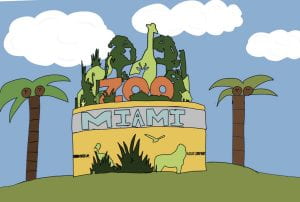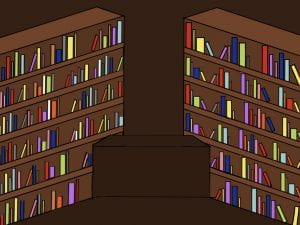Salutations.
Welcome back to sentiments from a quaranteen. On the menu for today? A provincial tournament reflection! In my most recent blog post, I explain the guidelines of our challenge, and you can visit that post here.
http://www.blog44.ca/allyt/2020/04/09/dideas-keep-on-comin/
Since the regional challenge, it would be safe to say that an abundant amount has changed. I ended off my regionals experience enthralled, and prepared to tackle another competition. Unfortunately, COVID-19 had other ideas. Instead of congregating in a building to celebrate our solutions, the competition ended abruptly with the cancellation of both provincials and globals. But this did not stop PLP. We continued to develop our solution, working around the hurdles that came with social isolation. All of our work, interactions and competitions were transferred online. Eventually, we presented an adapted stye of our solution in the comfort of our own home.
If you had told me only a few short months ago that the many hours that I dedicated to Destination Imagination would end up being a virtual background on a Zoom call, forget laughing at you. I would have most likely advocated for sending you to a mental ward. Nonetheless, changing our outcome to our constantly adapting situation ended up being very beneficial.
The process
Part 1: Post-DI stress
After the hubbub of regionals settled down, we began to plan for the triumph which would become provincials. My team did this by identifying the weaknesses of our performance. In this case, that would have been both of habitat and species morph. Originally, we had relied on iterating an elaborate solution whilst using time that we did not have. This would have included a fully reversible snake costume, as well as a rotating and self-illuminating backdrop. This is where we made the first mistake, overstepping our boundaries. In fact, what we should have been doing was preparing for the worst and hoping for the best. Prioritizing, and quickly collecting the necessary materials were at the top of our to do list. We began concocting blueprints for the backdrop, as well as collecting the materials required for our snake costume. Because we did not end up presenting this solution, (cough*thankscorona*cough) I could only hope that we would have met our astronomical expectations.

Part 2: Provincials frenzy
In preparation for provincials, our team met multiple times. One of our strengths during the duration of regionals was meeting as a team to consult in one another, which is why we made it our goal to continue communicating. We frequently talked over Basecamp, as well as over FaceTime, accentuating tasks that needed to get done. A deeper understanding of our challenge was gained during these meetings, making these moments important the success of our final product.
Part 3: Social distancing
Things became more complicated when we were informed that we would not be presenting our solution in person, but instead we would show our solution online. We faced difficulties with this new method, for instance we now were no longer able to use our snake costume or newly developed habitat morph. It changed many fundamental parts of our performance as well, such as the theatre in the round element, and a species interaction with the habitat. This incited us to rebuild our entire performance, yet instead of focusing on our weaknesses we decided to build off of our strengths. I focused on integrating more facts into our script while the rest of my team practiced virtual background shifts and our team choice element. In this phase, we did a good job when it came to staying connected, and adapting to our situation. Using research and our knowledge of technology, we were able to change our solution on the fly, and make it passable in the process.

When someone looks at our challenge solution, I want them to be able to note that this was a team effort. This element was especially important to me because during my last DI tournament, a team effort would have been the last words that I would have used to describe our challenge. Last year, I made it my goal to involve myself, and contribute all of my knowledge and ideas. This year, I did that by using research, and my identified strengths. Not only did I increase how active I was with my team, but I also changed the way I shared information. By doing it digitally, and keeping online lists and mind maps I was able to keep all of this information on an accessible platform. This helped me practice both my team work and my organizational skills.
Competencies
Research and Understand
How might I research and understand a problem, process, or challenge using different perspectives?
Now more than ever, this competency is applicable to this project. I found research and understanding crucial to our online transition. Our team began our regionals journey by meeting, and consulting in one another as to how we would tackle the issue. Eventually, thanks to using our varied perspectives we devised an idea which would allow us to continue with a theatre in the round challenge. We planned on having multiple cameras in the same zoom call so that we could show multiple perspectives, as we would have in our actual theatre in the round challenge. I find this to be worthy of mentioning, because we used multiple perspectives to develop an idea that revolved around multiple perspectives. See what we did there?
Furthermore, we used this competency heavily in the development of our online solution. I researched many different ways to use an interactive Zoom background while helping my team draw our backgrounds by hand. This required a deep understanding of both the problem at hand, as well as the materials required to solve it. Multiple perspectives played a role in this when we discussed this challenge as a group. Each of us were able to bring a varied perspective to the table, eventually resulting in the combination of these strategies. I believe that by doing this, we developed a better solution than each of us could have individually.
Finally, as a worthy mention it would be important to moot (I love that word) our Instant Challenge. This group activity cam with it’s own issues, especially since our group was so heavily reliant on each team member’s role. Right before our IC was set to begin, my wifi experiences an interruption which resulted in me leaving the meeting. This is the perfect example of needing to understand a problem on the fly, Instant Challenge style. This taught me that I must always come up with a plan B, in case things do not work out. I am glad that my team still finished our Instant Challenge.
Final product
The final product was not what I had expected it to be, to say the least. When it comes to improvement, I can solidly say that we improved many elements. During our regional tournament, our team a choice elements and script had been highlights for the judges. During our online tournament, we made a point of improving these elements even further. I am glad my team continued to incessantly FaceTime before our tournament, as many hitches were smoothed out in the process. What I learned from these moments is that working as a team, and tackling a task together is more effective and less painful than doing it individually. In the future, I would like to make it my goal to increase the amount of time that we spend on creating, and minimize the time spent on memorizing tasks. As much as I understand the cruciality of recognizing and imagining, we could have spent our post-regionals time taking action, rather than debating our solution.
https://youtu.be/T-uLnyxYkWg
”Good morning, and in case I don’t see ya, good afternoon, good evening and goodnight” – The Truman Show
My team has blogged about this experience too! You can visit their blogs here: Alex, Julia, Kaden, Meg and Ben





